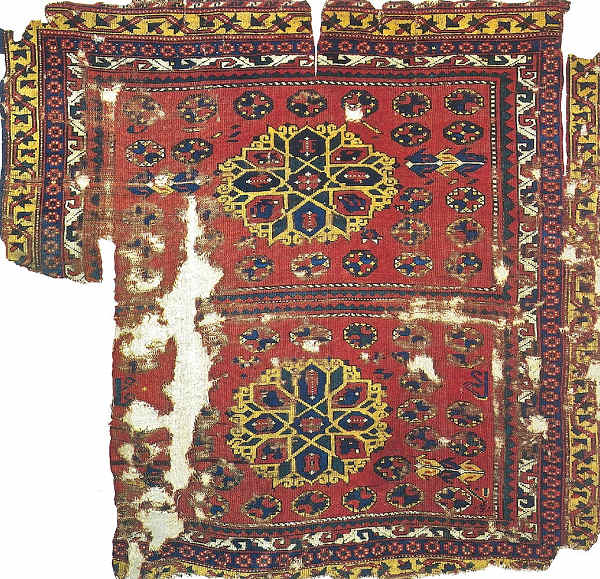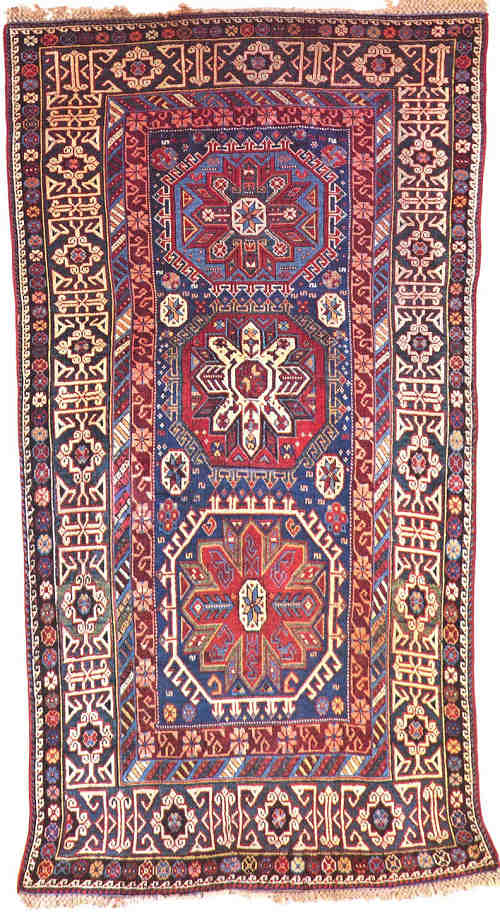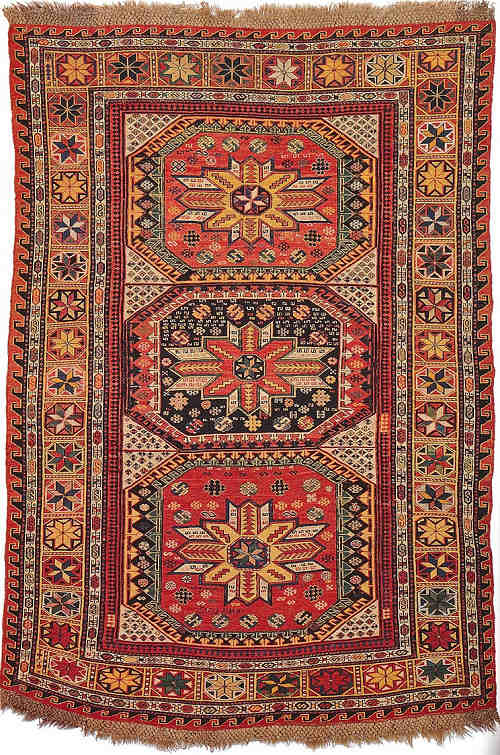Hi all,
I would like to come back just for a moment to the Crivelli Star:
A further browsing through the net and scores of rug books confirms that the motif was rare already in the 15th century. Only very few credible heirs can be found among extant anatolian 16th and 17th century rugs. FIG 1 being one of these rare birds.
 In "Orient Stars", H. Kirchheim.
In "Orient Stars", H. Kirchheim.
However, as quoted by Filiberto from Milberg «The largest group of rugs bearing 16-point medallions are to be found in the Caucasus. And here they are found in kilim, soumac, and pile structures, suggesting a northern Caucasian (nowadays Kuba/Daghestan) origin».
FIG 2 (Kuba rug), 3 and 4 (East-Caucasian sumaks) illustrate Milberg’s statement. Their 16-point star is indeed very similar to the 15th century prototypes.
 In "Orient Teppiche. Band I. Kaukasische Teppiche" by D. Eder.
In "Orient Teppiche. Band I. Kaukasische Teppiche" by D. Eder.
 In "Sovereign Carpets. Unknown Masterpieces from European Collections" by E. Concaro & A. Levi
In "Sovereign Carpets. Unknown Masterpieces from European Collections" by E. Concaro & A. Levi.

One might argue that the design is merely a late revival, inspired by commercial considerations. However, experts date a number of such rugs from the early 19th century or older. FIG 2-4 indeed look pre-Kustar, don’t they?
One cannot exclude therefore that a Caucasian ethnic group has kept weaving large Crivelli Stars during half a millennium. To quote Rich: «It is remarkable how persistent are many of the designs»
Filiberto has drawn my attention to a commercial Caucasian rug site mentioning opinions of various daghestani populations about the origin of that design. There is no unanimity about it, but all seem to agree that it is traditional. «...Tabarasan call this design «Juhud» (Jewish), Lezgis of the Kuragh region call it «Karabagk khanch» (Karabagk crest) and Lezgis of the Akhti region call it «Ermeni» (Armenian)....». The daghestani site owner adds his personal opinion that the star is probably the expression of « the artistic traditions of Mountain Jews and Armenians, the only Jewish and Christian people living in Daghestan for centuries as neighbors and compatriots...».
Amen.

Pierre